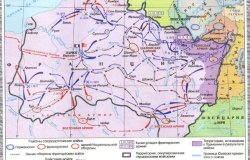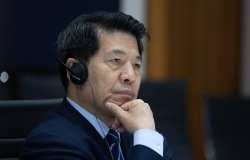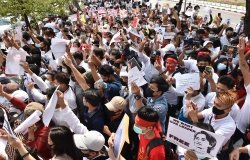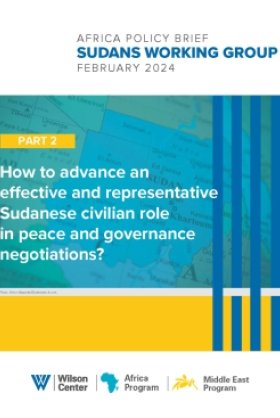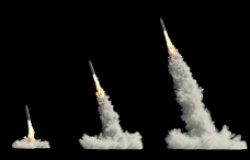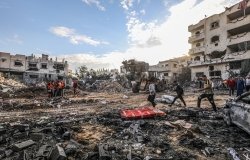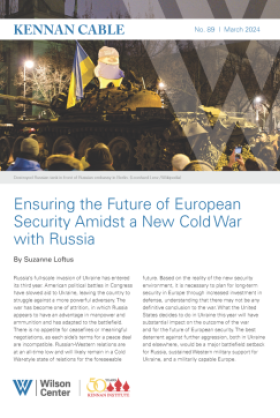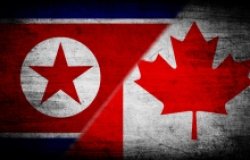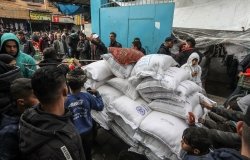Obama's Arab Security Strategy: An Old Doctrine Gets Put to the Test in Yemen
"Yemen couldn’t be a worse place to put the American Gulf security plan to the test. It is a certified failed state with an impeccable record of sucking outside powers into a treacherous tribal quicksand," writes David Ottaway.
Twenty-five years ago, in the wake of the Gulf War, the first Bush administration sketched out a plan for the security of its Arab partners. The original had Iraq in mind as the aggressor. Today, a version of that plan is finally seeing the light of day. But this time, Iran is the focus and the region is embroiled in a civil war in Yemen.
The U.S. plan has always been aimed at building up its partners’ collective defense capability so that the United States can recede into a supporting role in the region rather than a leading one. U.S. President Barack Obama reaffirmed this objective during his May 13–14 summit at Camp David with leaders of the six members of the Gulf Cooperation Council (Bahrain, Kuwait, Oman, Qatar, Saudi Arabia, and the United Arab Emirates). He promised that the United States would “help our Gulf partners improve their own capacity to defend themselves” and that his government would “streamline and expedite” U.S. military aid to those countries to achieve that goal.
But Obama also made clear that the purpose of enhanced U.S.-GCC security cooperation wasn’t “to perpetuate any long-term confrontation with Iran or even to marginalize Iran,” and he offered no support for the Saudi-led campaign to crush Iran’s allies in Yemen. For Saudi Arabia and its allies, however, the very purpose of increased military cooperation with the United States is just that.
Indeed, Yemen couldn’t be a worse place to put the American Gulf security plan to the test. It is a certified failed state with an impeccable record of sucking outside powers into a treacherous tribal quicksand, a bitter reality that even the Arab world’s military powerhouse, Egypt, discovered during a civil war there in the 1960s.
Saudi Arabia, the keystone of the U.S. regional strategy, now finds itself backing into the losing side of a proxy war in its neighbor’s territory. The war drew international attention when Iranian-backed Houthi rebels overturned Abed Rabbo Mansour Hadi’s government last September. The president fled the country on April 1 as his supporters began losing control of Aden, his last stronghold in southern Yemen. Hadi is now living in exile in the Saudi capital, Riyadh, with questionable prospects of ever returning to his homeland.
As the situation in Yemen deteriorated, the Saudis rushed to cobble together a coalition of nine Sunni Arab states and Pakistan to restore to power the recently ousted president. But one of the GCC monarchies, Oman, refused to participate; Pakistan has since decided to stay out; and Egypt never showed interest in sending in troops as part of a land invasion.
The question now is whether the Saudi-led coalition that has been bombing Houthi-held territory will launch a ground invasion, either with its own forces or by backing a force of Yemeni allies, to establish a base for Hadi inside his country. Either step seems certain to assure a long, drawn-out struggle among Yemeni factions. For the Obama administration, it is yet another crisis that stems from the seemingly endless fallout from the 2011 Arab Spring.
Before this conflict, the president had been urging all of the United States’ Arab partners to consider deploying their own troops in exactly this type of war. In an April 5 interview with New York Times columnist Thomas Friedman, Obama even suggested an Arab military intervention to help rebels in Syria topple President Bashar al-Assad’s regime in Syria. “Why is it that we can’t have Arabs fighting [against] the terrible human rights abuses that have been perpetrated, or fighting against what Assad has done?” he asked.
But so far, the Obama administration has restricted its support for the Saudi-led Operation Decisive Storm, now renamed Operation Restoring Hope, to logistics and intelligence while pressing for a cease-fire and political settlement. He has given no hint of encouragement for Saudi Arabia and its allies to send ground troops into Yemen, presumably because of the danger of the United States also being sucked into yet another Middle East morass. If the Saudi-led coalition falters or faces defeat, however, Saudi Arabia could soon be knocking on Washington’s door asking for greater U.S. involvement.
The Arab Gulf security plan never envisaged a civil war involving Saudi and Iranian proxies. It was hatched in the wake of the 1990–91 Gulf War, when it seemed more important to protect Saudi Arabia and its five Arab Gulf allies, all monarchies, from Saddam Hussein’s Iraq.
The security shield was to comprise three tiers, starting with the six members of the Saudi-led GCC at the core. If Iraq launched another attack and the GCC needed help, Egypt was to provide the second tier. (A role was also earmarked for Syria, which had fought on the Saudi side against Iraq.) Only if this larger Arab coalition was failing would the United States come to the rescue and provide a third layer of defense.
The U.S. plan gained an initial endorsement—the Damascus Declaration, issued by these six countries in March 1991 immediately after the U.S.-led liberation of Kuwait. The six were then in somewhat of a state of euphoria, promising to work for “a new Arab order to bolster joint Arab action.”
The scheme never got off the drawing board, though, due to the Gulf monarchies’ innate hesitancy to depend on either Egypt or Syria for their security and their preference for bilateral military ties with the United States. Then, the 2003 U.S. invasion of Iraq removed Saddam as the major threat to the monarchies. Instead, Iran took Iraq’s place as their main concern as Shia allies won American-backed elections there.
Ever since, Saudi Arabia and Iran’s rivalry for dominance in the Gulf has grown steadily worse. The United States has routinely pressed the six GCC monarchies to form a single, integrated military force and has emphasized joining their individual anti-missile defense systems into one Gulf-wide structure to counter Iran’s growing arsenal of short and medium-range missiles. Obama made yet another pitch for building a GCC-wide missile defense system during the Camp David summit last week.
The monarchies have responded by beefing up their own defenses and buying well over $100 billion worth of U.S. arms, from F-15 and F-16 fighter planes and Apache attack helicopters to short-range Patriot and Theater High Altitude Area Defense (THAAD) anti-missile systems. Saudi Arabia alone is spending $90 billion on American arms purchases.
It is unlikely that these weapons will become an integrated GCC missile defense shield anytime soon. For the foreseeable future, the United States will still provide that cover through its ships and land bases that line the Persian Gulf. The main obstacle has been the unwillingness of Saudi Arabia’s Arab partners to entrust their defense to it. This is due partly to fear of losing sovereignty, but also partly related to differing policies toward Iran, including various degrees of cooperation rather than confrontation.
A Saudi defeat in Yemen would likely reinforce the desire particularly of Qatar and Oman, both involved in extensive commercial dealings with Iran, to avoid confrontation and stay out of an anti-Iranian collective defense alliance dominated by Saudi Arabia. Only the United Arab Emirates and Bahrain seem enthusiastic. So far, Saudi Arabia, which has committed 100 aircraft to Yemen, is still the mainstay of the bombing campaign. But the Houthis remain undeterred, Hadi’s support is dwindling, and the Saudi kingdom finds itself under increasing international pressure to sue for peace. These trends do not bode well either for Saudi leadership or the U.S. plan for a common Arab Gulf defense.
The opinions expressed here are solely those of the author.
This article was originally published in Foreign Affairs.
About the Author


Middle East Program
The Wilson Center’s Middle East Program serves as a crucial resource for the policymaking community and beyond, providing analyses and research that helps inform US foreign policymaking, stimulates public debate, and expands knowledge about issues in the wider Middle East and North Africa (MENA) region. Read more
